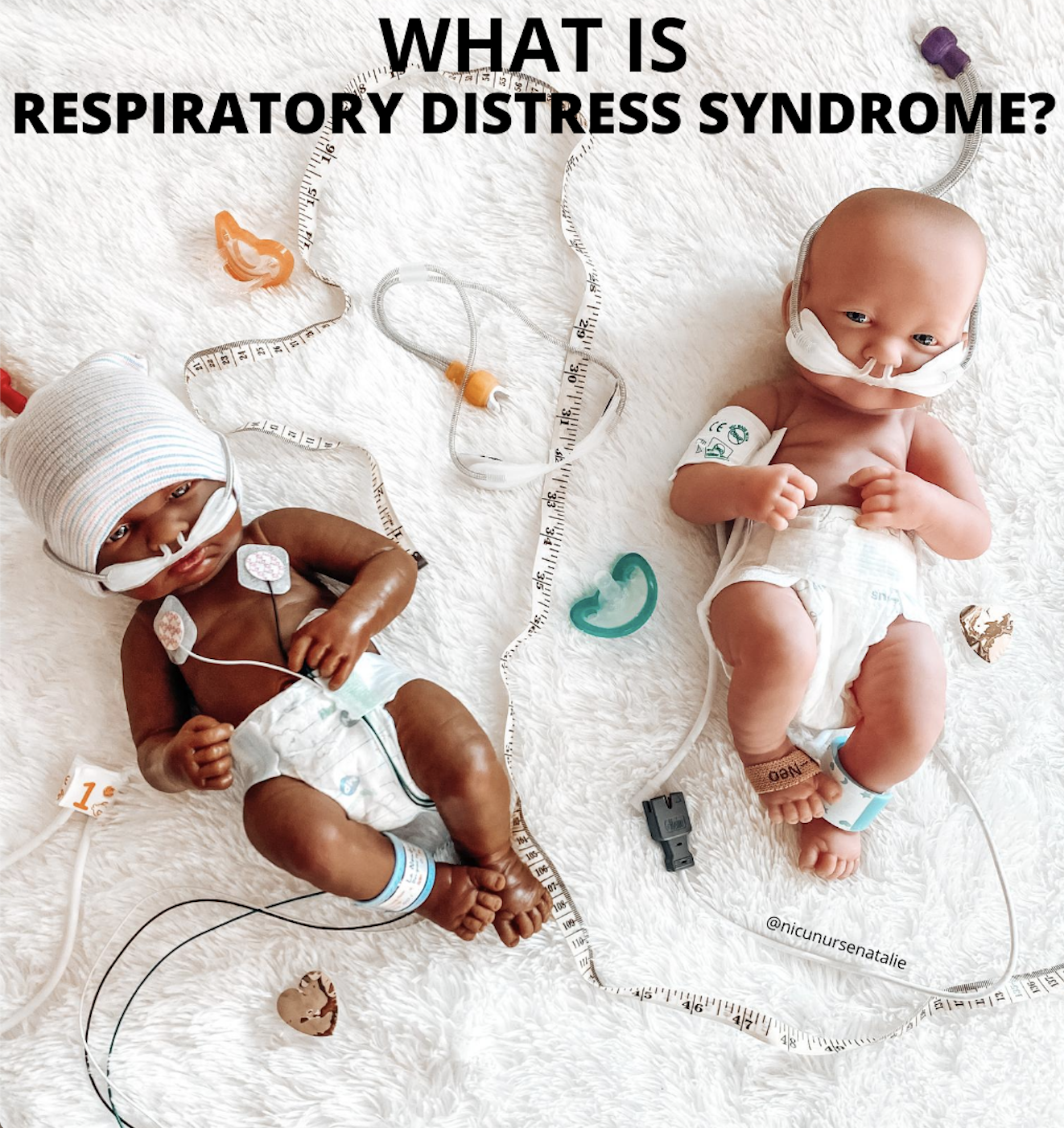When infants are born prematurely, some of their organs may be developed enough to survive outside of the womb. However, lungs mature very late in gestation during the end of the third trimester. This means that a preemie is likely to have a difficult time breathing.
The most common problem encountered in the NICU is Respiratory Distress Syndrome (RDS). RDS typically affects late preterm neonates born earlier than 34 weeks gestation. One of the major causes of RDS is decreased surfactant production.
What are some signs & symptoms of RDS?
Tachypnea
Expiratory grunting
Chest retractions
Head bobbing
Accessory muscle use
Nasal flaring
Cyanosis
How is RDS treated?
The severity of RDS varies depending on how early the baby is born. A chest x-ray is typically performed to see what the lungs look like.
Mild RDS might cause only minimal labored breathing for a few days and then start to improve as the lungs begin producing surfactant.
Moderate RDS may require supplemental oxygen via noninvasive respiratory support for a few weeks.
Severe RDS often requires aggressive lifesaving treatment, and the infant will probably need to be placed on a ventilator for quite some time.
Tocolytics (medications used to delay premature birth) and steroids are given to pregnant mothers if they are at risk of preterm labor. These meds are given as prophylactic (preventive) treatment to help speed up a baby’s lung development and maturation prior to delivery.
Due to medical advances in the field of neonatology, preemies with RDS typically recover very well and have a much higher and better chance not only surviving but also thriving. However, there are some babies who suffer from RDS for months. We consider these babies “chronic lungers” because they are at risk for developing Bronchopulmonary Dysplasia (BPD) → stay tuned for a future post!
